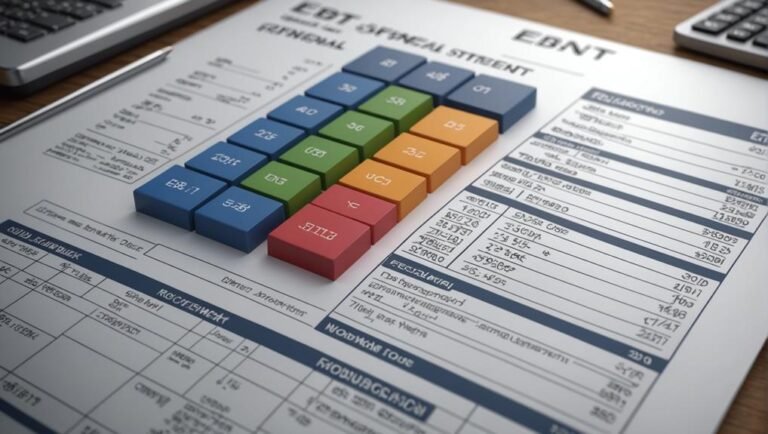Auto Insurance: Definition, How It Works, Coverage Types & Costs
If you didn't know, did you realize that approximately 13% of drivers in the United States are uninsured? Understanding the ins and outs of auto insurance can be a game-changer when it comes to protecting yourself and your assets on the road. From the various coverage types available to the factors influencing costs, there's a lot to ponder when it comes to this essential financial safeguard. So, how exactly does auto insurance work, and what types of coverage are best suited to your needs? Let's unpack this crucial topic further.
Key Takeaways
- Auto insurance is essential for financial protection against accidents and damages.
- Policyholders notify insurers to initiate the claims process.
- Various coverage types include liability, collision, and personal injury protection.
- Factors like age and driving record influence insurance costs.
- Coverage typically extends to policyholders, family members, and authorized drivers.
Importance of Auto Insurance
Auto insurance is an essential component of financial protection for drivers, offering coverage against potential losses resulting from accidents or damages. It provides financial security by ensuring that you're protected in case of unexpected events on the road.
Additionally, auto insurance is a legal requirement in most states, ensuring that you meet the necessary obligations while driving. By having auto insurance, you can have peace of mind knowing that you're financially covered in the event of a car accident or damage to your vehicle.
This coverage not only safeguards your finances but also helps prevent legal issues that may arise if you're involved in an accident without insurance.
Working Mechanism of Auto Insurance
Understanding the operational framework of auto insurance involves grasping the intricate interplay between policyholders and insurance companies. When a claim arises, policyholders notify their insurance company, which then initiates the claims process. The insurer investigates the claim's validity and assesses the extent of coverage based on the policy terms.
It's important to provide accurate information to avoid delays in claim processing. Insurance fraud, such as providing false information or exaggerating claims, is illegal and can lead to severe consequences. To guarantee a smooth claims process, cooperate with the insurer, provide necessary documentation promptly, and report any suspicious activities to prevent fraud, ultimately benefiting both policyholders and insurance companies.
Various Coverage Types
When exploring various coverage types in auto insurance, it's important to understand the specific protections each type offers. Liability insurance covers injuries and property damage to others, while collision insurance pays for your vehicle's damage in accidents. All-inclusive insurance protects against non-collision incidents like theft.
Personal injury protection covers medical expenses for you and your passengers, and uninsured/underinsured motorist coverage safeguards against drivers with insufficient insurance. When comparing coverage, consider the policy limits, which determine the maximum amount your insurer will pay out for a claim.
Understanding these coverage types and their respective policy limits is essential to make sure you have adequate protection in various scenarios. Comparing coverage options based on your needs and preferences can help you select the most suitable auto insurance policy.
Determining Auto Insurance Costs
Exploring the factors that influence auto insurance costs reveals the intricate calculations behind determining the financial aspects of your coverage. Premium calculations consider various elements such as your age, driving record, location, and the type of coverage you choose.
Factors influencing costs include the level of risk associated with your driving profile and the extent of coverage you opt for. Insurers assess these factors to determine the likelihood of you filing a claim and adjust your premium accordingly.
Safe driving habits and bundling policies can often lead to discounts, while opting for full coverage or being classified as a high-risk driver may result in higher premiums. Shopping around for the best rates is important in finding the most suitable coverage for your needs.
Individuals Covered by Auto Insurance
Auto insurance coverage extends to the policyholder, family members, and authorized drivers, providing protection in various driving scenarios.
Family members living in the same household as the policyholder are typically covered under the auto insurance policy. Authorized drivers are individuals permitted to operate the insured vehicle with the policyholder's consent.
It's essential to recognize that personal auto insurance generally excludes coverage for commercial use or ride-sharing services. However, coverage can extend to drivers who've permission to use the insured vehicle. In cases where individuals engage in ride-sharing activities, supplemental insurance options may be available to provide adequate coverage.
Understanding who's covered under your auto insurance policy is vital for ensuring thorough protection in different driving situations.
Customizing Auto Insurance Policies
As you consider customizing your auto insurance policy, it's important to understand how tailored coverage options can better suit your individual needs and circumstances. Policy customization allows you to adjust coverage levels and add specific protections that align with your driving habits and risk tolerance.
When customizing your policy, pivotal factors play an important role in determining the cost of your coverage. Factors such as your age, driving record, type of vehicle, and where you live can impact the premiums you pay.
Ensuring Adequate Auto Insurance Protection
To guarantee you have sufficient protection with your auto insurance policy, it's crucial to carefully evaluate your coverage needs and make informed decisions based on your individual circumstances. When ensuring adequate auto insurance protection, consider the following:
- Coverage Limits:
- Understand the maximum amount your insurance will pay for claims.
- Evaluate if these limits align with potential risks you may face.
- Claim Process:
- Familiarize yourself with how to file a claim with your insurer.
- Ensure you know the necessary steps and documentation required for a smooth claims process.
- Policy Review:
- Regularly review your policy to ensure it still meets your coverage needs.
- Adjust coverage limits and types as your circumstances change.
Conclusion
As you navigate the winding roads of life, think of auto insurance as your trusty co-pilot, guiding you through unexpected twists and turns.
Like a sturdy shield protecting a knight in battle, auto insurance stands ready to defend you against the unforeseen dangers that lurk around every corner.
So buckle up, secure your coverage, and enjoy the peace of mind that comes with knowing you're safeguarded on your journey ahead.







